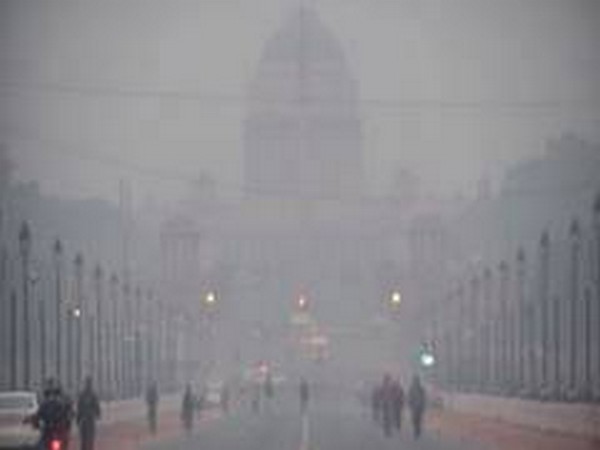Delhi's air quality 'poor'; likely to worsen by Wednesday
The Ministry of Earth Sciences' air quality monitor, SAFAR, said the AQI was likely to slip to 'very poor' category by Wednesday due to a change in wind direction and a reduction in the wind speed. Expecting further deterioration in air quality in the coming days, the Supreme Court-mandated Environment Pollution (Prevention and Control) Authority (EPCA) on Monday asked the Uttar Pradesh and Haryana governments to be ready to close thermal power plants that do not meet the standards laid down in 2015.

- Country:
- India
Pollution levels in Delhi dipped slightly on Monday but the air quality stayed in the 'poor' category, with government agencies saying the AQI was likely to slip to 'very poor' in the next few days due to a change in wind direction and a reduction in speed. The city recorded a 24-hour average air quality index (AQI) of 244. It was 254 on Sunday, 287 on Saturday, 239 on Friday and 315 on Thursday, the worst since February 12 (AQI 320). An AQI between zero and 50 is considered 'good', 51 and 100 'satisfactory', 101 and 200 'moderate',201 and 300 'poor', 301 and 400 'very poor', and 401 and 500 'severe'. The Ministry of Earth Sciences' air quality monitor, SAFAR, said the AQI was likely to slip to 'very poor' category by Wednesday due to a change in wind direction and a reduction in the wind speed.
Expecting further deterioration in air quality in the coming days, the Supreme Court-mandated Environment Pollution (Prevention and Control) Authority (EPCA) on Monday asked the Uttar Pradesh and Haryana governments to be ready to close thermal power plants that do not meet the standards laid down in 2015. In two separate letters, EPCA chief Bhure Lal asked the two states to review preparedness for closing thermal power plants and to inform the authority of this as well as steps that will be taken to ensure compliance with necessary shut-down during the peak winter period.
Delhi Chief Minister Arvind Kejriwal requested Union Environment Minister Prakash Javadekar to hold monthly meetings with the tghe CMs of Delhi, Punjab, Haryana and Uttar Pradesh to curb air pollution, saying there is a lack of political will at the level of the states to address the problem of stubble burning. In a virtual press briefing, he said the affected states have been unable to find a solution to stop stubble burning and prevent air pollution.
"I believe pollution due to stubble burning can be controlled in a short span of time. But a lack of political will is visible in doing that." Delhi Environment Minister Gopal Rai said the city government will deploy 2,500 environment marshals across the national capital to generate awareness about its recently launched anti-pollution campaign, 'Red Light On, Gaadi Off', to curb vehicular pollution. He also said a meeting of the environment ministers of Delhi, Punjab, Haryana, Rajasthan and Uttar Pradesh with the Centre must be held every 15 days to discuss matters pertaining to pollution and stubble burning. Such meetings will help in improving coordination between the states, he said.
According to SAFAR, the share of farm fires in Delhi's PM2.5 pollution stood at 10 per cent on Monday with 1,090 stubble fire around Haryana, Punjab, and neighbouring regions. It said a change in surface wind direction is expected by early Wednesday which is "likely to bring calm surface wind conditions, leading to low ventilation and deterioration of AQI". Very poor AQI is predicted for Wednesday and Thursday, Ministry of Earth Sciences' air quality monitor said. "Though transport-level wind direction is favourable, an increase in the wind speed and local surface winds led to a decrease in stubble contribution in Delhi's PM2.5," SAFAR said.
The share of stubble burning in Delhi's PM2.5 pollution was 17 per cent on Sunday, 19 per cent on Saturday, 18 per cent on Friday, around one per cent on Wednesday and around 3 per cent on Tuesday, Monday and Sunday. The Ministry of Earth Sciences' Air Quality Early Warning System for Delhi said the ventilation index -- a product of mixing depth and average wind speed -- was 10,000 meter square per second on Monday, favourable for dispersion of pollutants.
Mixing depth is the vertical height at which pollutants are suspended in the air. It reduces on cold days with calm wind speed. A ventilation index lower than 6,000 sqm/second, with average wind speed less than 10 kmph, is unfavourable for dispersal of pollutants.
(This story has not been edited by Devdiscourse staff and is auto-generated from a syndicated feed.)
- READ MORE ON:
- Punjab
- Gaadi Off'
- Arvind Kejriwal
- Haryana
- Rajasthan
- Gopal Rai
- Bhure Lal
- Prakash Javadekar
ALSO READ
Rajasthan Royals must improve their strategic execution in order to outperform Punjab Kings
PM Modi to hold poll campaigns in J&K, Rajasthan today
Delhi: AAP workers stage protest at ITO over Arvind Kejriwal's arrest
Amit Shah slams Cong president Mallikarjun Kharge for asking what do people of Rajasthan and Uttar Pradesh have to do with Kashmir
This election is not an election of party but of country: PM Modi at rally in Rajasthan's Barmer.










